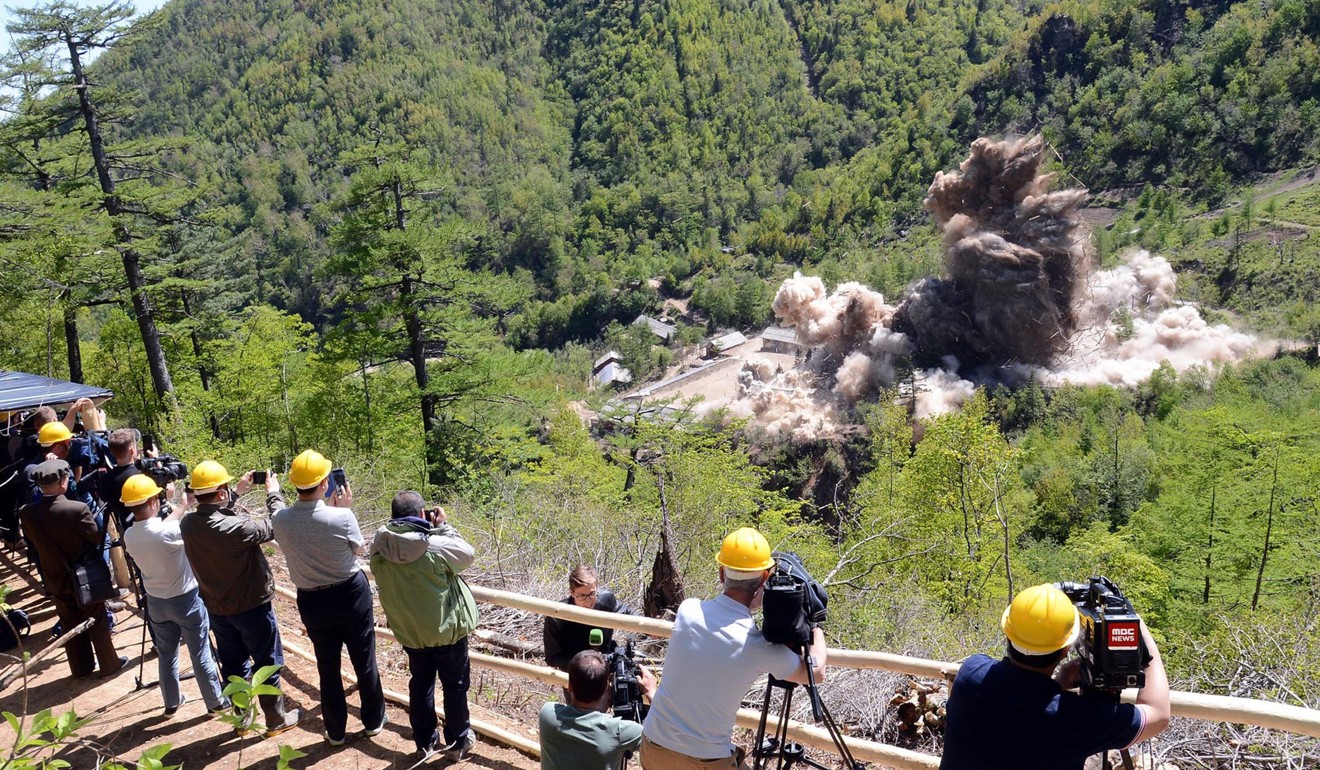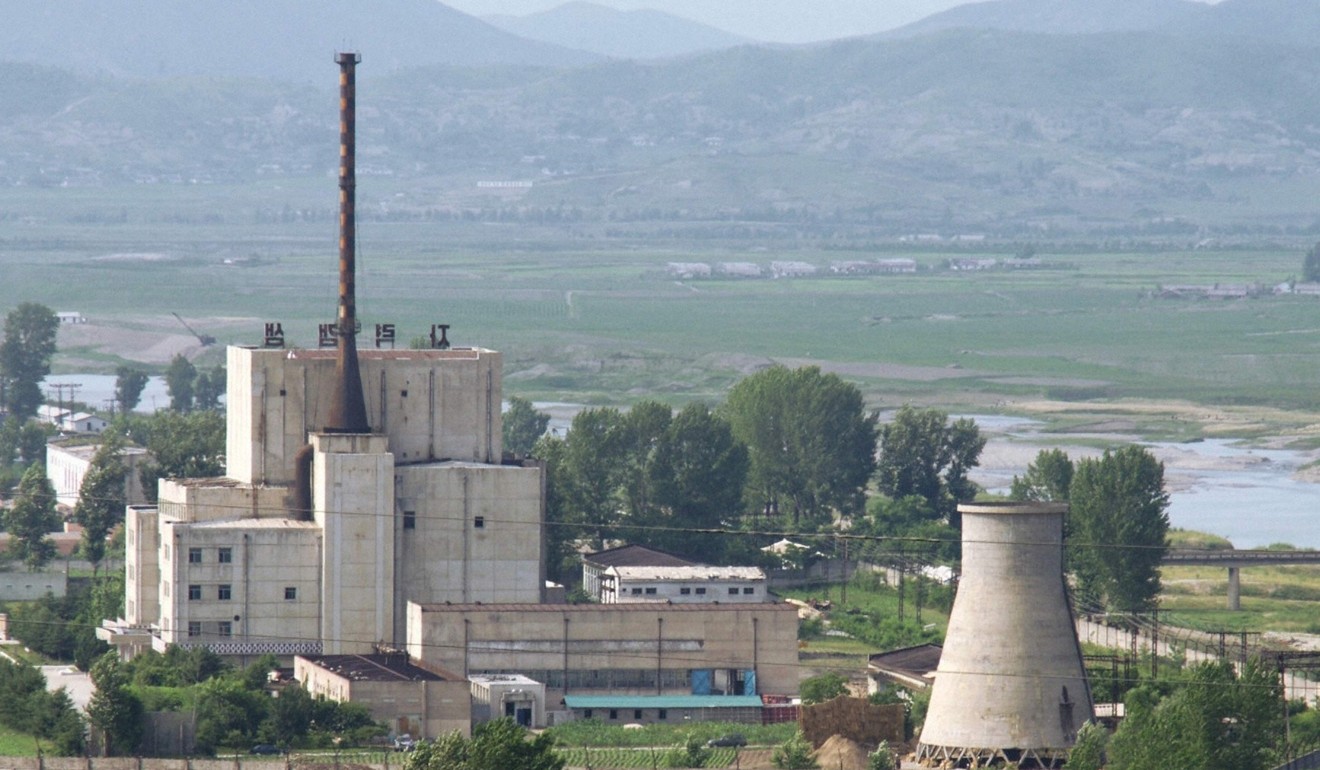
Why Donald Trump should stay wary about North Korea’s nuclear plans – even if Kim Jong-un promises to allow inspections
Experts say that the level of know-how and stock of easily concealed materials would make it easy for Pyongyang to start making bombs again
Experts believe that North Korea has the capability and knowledge to hide hundreds of kilograms of nuclear material from inspectors and could quickly resume its bomb-making programme, even if it agrees to start the denuclearisation process at next week’s summit between Donald Trump and Kim Jong-un.
A recent report by a team led by Siegfried Hecker, a former director of the America’s Los Alamos weapons laboratory, calculated that at the end of last year North Korea’s inventory contained between 250 and 500kg (550-1,000lb) of highly enriched uranium-235 (HEU) and 20 to 40kg of plutonium-239 (Pu-239), the two most important materials for making a bomb.
A single atomic bomb needs about 4-10kg of weapons-grade plutonium, or about 15kg of HEU. With additional fusion materials that are much easier to produce, more powerful hydrogen bombs can be assembled.
“With the material, the knowledge, the experienced scientists, North Korea will be able to make the weapons again,” said an expert with Chinese Academy of Engineering Physics (CAEP), the country’s nuclear weapons research and manufacturing institution, speaking on condition of anonymity. “A system of knowledge is difficult to eliminate.”
China may send fighter jet escort for Kim when he travels to meet Trump
Pyongyang’s nuclear programme will be a primary topic of discussion when the US president and the North Korean leader meet in Singapore on Tuesday. Although they may disagree on what “denuclearisation” actually means, from the US perspective, it would likely require the inspection and surrender of all the fissile materials.
However, no one knows exactly how much material North Korea holds, in particular how much HEU, and enrichment facilities are easy to conceal.
“Enrichment of uranium is one capability that can be most easily hidden and made almost impossible to inspect and verify,” said Zhao Tong, a Beijing-based fellow in the nuclear policy programme at the Carnegie Endowment for International Peace.
Kim, the economy and what really brought North Korea to the table
He said the credibility of North Korea’s “denuclearisation” could be built only on mutual trust and confidence because 100 per cent transparency was impossible.
“Centrifuges can be built underground and covered up in unknown corners of the country,” he said.
In 2010, North Korea showed a US delegation that it had 2,000 centrifuges at its Yongbyon nuclear complex, which could produce 40kg of HEU annually.
There has been no concrete information since then, but satellite imagery in 2013 showed that the size of the centrifuge facility had doubled, according to a report by Hecker and his colleagues Robert Carlin and Elliot Serbin at Stanford University’s Centre for International Security and Cooperation.
Experts’ concerns remain after North Korea ‘blows up test site’
Hecker also said that because there was no information about the North’s covert facilities, it was not possible to say what its annual HEU production capacity was.
North Korea acquired its first centrifuges from Pakistan around 1997, and has since built its own uranium enrichment equipment.
It has two uranium mines to supply ore that could eventually be made into HEU or Pu-239.
An assessment by the US Defence Intelligence Agency last month concluded that North Korea could produce enough fissile materials for one nuclear weapon each month.

Although it is easier to manufacture Pu-239, it is also easier to detect upon inspection.
This isotope is a product of uranium fission reaction and can be reprocessed from the spent fuel rods of the reactors found at nuclear power plants.
Currently the only active reactor in North Korea is located at the Yongbyon complex, and is capable of producing 6kg of plutonium a year.
Another experimental light water reactor is under construction and close to becoming operational, which will significantly increase the North’s capacity to produce plutonium.
North Korea insists no radiation leak as reporters return from nuke site demolition
In an inspection in 1992, North Korea declared that it had only 90 grams of plutonium-239, but the IAEA believed it had more, possibly a few kilograms.
Last month, North Korea blew up tunnels at Punggye-ri, its only known nuclear test site.

The US has said it wants the “complete, verifiable, irreversible dismantlement” of North Korea’s nuclear capabilities, which will require inspections of all aspects of its nuclear programme, ranging from production facilities to test sites.
US to brief China and South Korea after summit with Kim Jong-un
Although the US National Security Adviser John Bolton has previously suggested that the US would push for a “Libyan” model – based on the deal that saw Muammar Gaddafi sending all his nuclear devices, materials, documents and even centrifuges to the US – Washington now appears to have abandoned this approach.
Zhao said that whatever measures the North agreed to take would need intense international supervision to ensure that they were irreversible rather than just superficial steps.

